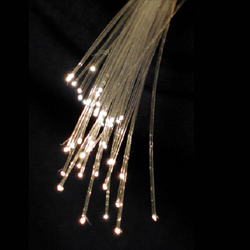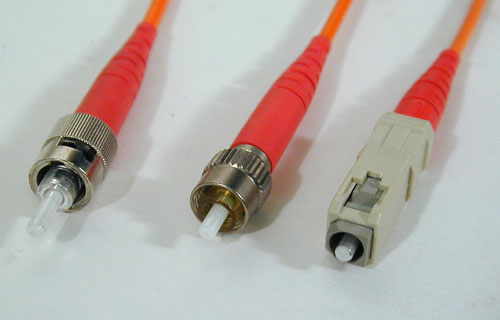
KEY FIBER OPTIC TERMS
Bandwidth: A measurement of the information-carrying capacity of an optical fiber. Note: This term is often used to specify the normalized modal bandwidth (MHz•km) of a multimode fiber. See “Dispersion” (below) for singlemode fibers.
Cladding: The material surrounding the core of an optical waveguide. The cladding must have a lower index of refraction to keep the light in the core.
Dielectric: Non-metallic and, therefore, non-conductive. Glass fibers are considered dielectric. A dielectric cable contains no metallic components.
Dispersion: The cause of bandwidth limitations in a fiber. Dispersion causes a broadening of input pulses along the length of the fiber. Three major types are: 1) modal dispersion caused by differential optical path lengths in a multimode fiber; 2) chromatic dispersion caused by a differential delay of various wavelengths of light in a waveguide material; and 3) waveguide dispersion caused by light traveling in both the core and cladding materials in single-mode fibers.
Electro Magnetic Interference (EMI): Electrical noise, or EMI, are unwanted electrical signals that produce undesirable effects and otherwise disrupt the control and degrade the fidelity of system circuits. EMI may be either radiated or conducted. When the noise originates from a source and travels through the air it is called radiated. Conducted noise travels on an actual conductor, like a power line. The original noise may have been radiated, coupled into the lines, and then conducted.
Ferrule: A mechanical fixture (generally a rigid polymer or metal tube) used to protect and align a fiber in a connector. Generally associated with fiber optic connectors.
Fiber: Thin filament of glass. An optical waveguide consisting of a core and a cladding that is capable of carrying information in the form of light.
Fiber Bend Radius: The radius a fiber can bend before the risk of breakage or an increase in signal attenuation.
Minimum Bend Radius: The amount of bend a fiber (or cable) can withstand before experiencing problems in performance.

